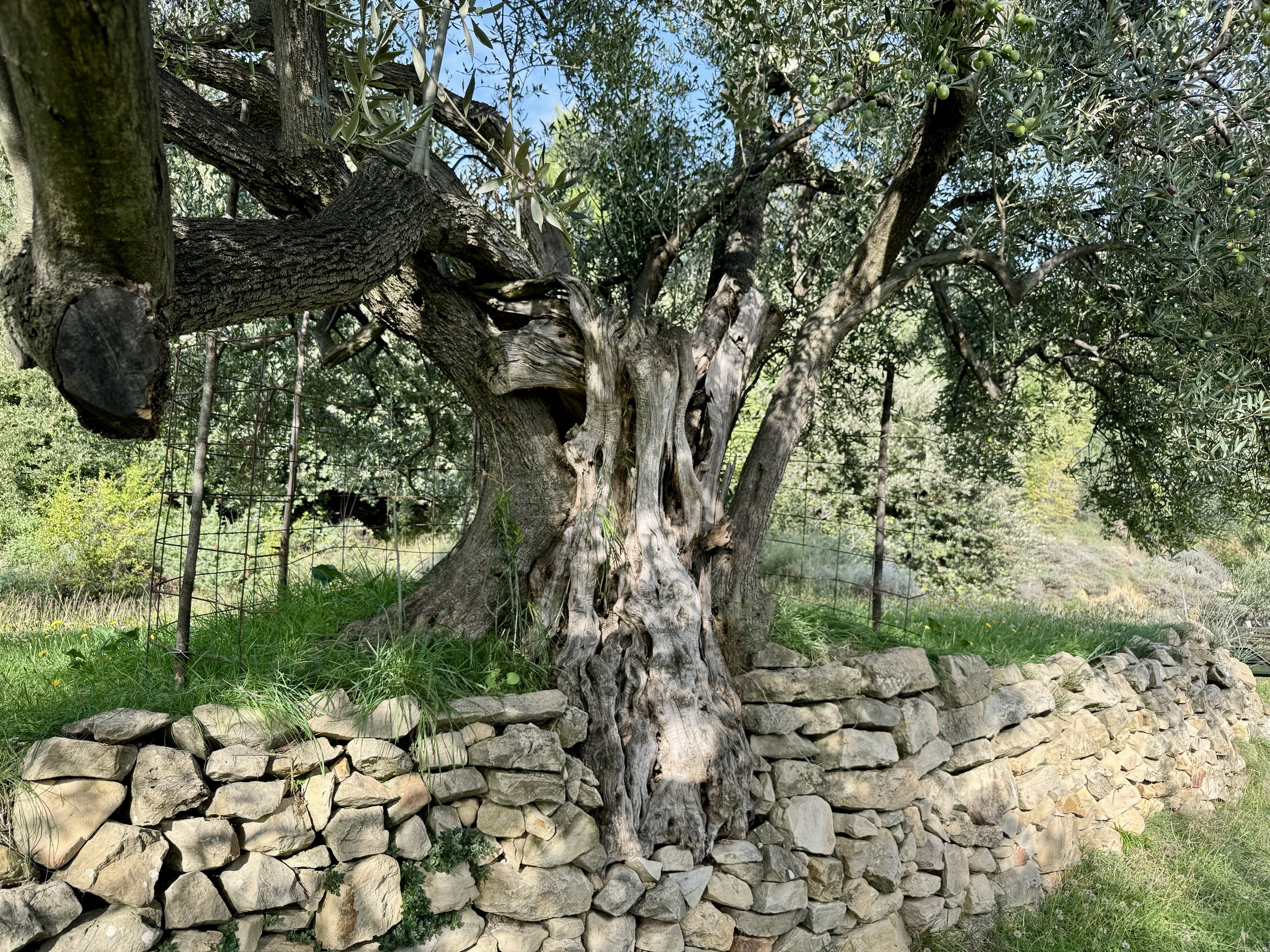The Olive Harvest
A good year for olives this year on Rab. Throughout Croatia, too. Last year’s output was thin here. This year, there are traffic jams in front of the olive processing plant with people bringing 200, 300, 400 kilos and more of olives to be pressed into the wonderfully cloudy, green liquid. I read that the actual yield of oil is expected to be lower because of the heavy rains we had in September. More water than oil in the olives, apparently. But the olives I picked certainly seemed to contain quite a bit of oil. Just cutting into one and squeezing it lightly produced a stream of oil.
The first fruits of our labors.
But I have nothing to compare it to. This is my first go-round picking olives. We—my husband and I—plucked them by hand since there weren’t too many trees to harvest. These trees, in my brother-in-law’s grove, are young and just getting established. Last year, they didn’t yield many (if any) olives at all. This year, we picked enough—about forty kilos—for three and one half liters of oil. And had plenty left over to cure/brine in five large jars. So this was a small harvest in comparison to others, easy to accomplish by hand and simply dropping the olives on a tarp that we had laid out on the ground. We saw many families, with their more numerous and mature trees, using a tree shaker, a motorized contraption that uses a spinning/pulling motion, to pluck the fruits. We gave over our collected olives to our nephew who took them to the processing plant and within a few days had our oil. Unbelievable taste with a nice bite to it.
The first pressing yielded this much oil.
It's hard to overstate my love for olives. In the U.S., it would be a rare week that I didn’t have a carton of fresh olives from a specialty (Middle Eastern or Afghani) grocery store. But here, such olives are hard to come by. Mostly, at least on the island, it’s commercial olives in jars. Usually, one variety. I’ve always found this odd given the millions of of olive trees in this country, but the majority of olives seem to be given over to making oil.
The olive oil processing place in the town of Banjol on Rab.
That’s one reason why I set aside a few kilos to try my hand at the curing/brining process. I found dozens upon dozens of recipes online, many with similar approaches, but just different enough to leave you second-guessing everything. To crush or not to crush? To slice? To soak in brine or simply in fresh water? 10 days soaking, 20, 40? All of the approaches seemed to produce a good result so I finally settled on something simple, slitting each olive and soaking them in lightly salted water for about ten days, changing the water every day. On the eleventh day, I put the olives in sterilized jars and added a final light brine, some vinegar, and herbs, then topped the jars off with olive oil.
First attempt at curing and brining a batch of both green and black olives.
After following this process with the first batch, I asked around for ideas for the second batch. Nearly everyone was in agreement that it’s best to take water directly from the Adriatic—of course, you must use sea water!—and soak the olives that way. The other thing that I heard from a few people was to bake the olives after soaking them. Given how bitter the olives are even after an initial soaking in brine, I really questioned this approach, and was going to write it off entirely until my sister-in-law sent me a recipe which I followed to a tee and the result was incredible. I can now report that fresh olives roasted in a very hot oven with some herbs, garlic, orange slices, and olive oil, are divine.
Ahhh . . . the roasted, fresh olives.
Olives are typically harvested in November. This year, though, the olives began to ripen earlier, perhaps due to warming temperatures. (Figs, too, came early, ripening in July rather than in August.) Although there are still some trees flush with olives, many people have already completed their harvest.
After the second day of picking olives, I made a short pilgrimage to the oldest olive tree on Rab. Located on private property on the road to Kampor, the tree sits high on a hill overlooking a vast olive grove. The tree is estimated to have been planted in 772 when Rab was part of the Byzantine empire. It has seen its share of rulers over the years and also its share of industries—including silk and wine—come and go. But olive production has remained pretty constant.
Rab’s oldest olive tree, planted in 772.
If you ever visit Rab—and you should—you should also visit the neighboring island of Pag that has a beautiful grove of olive trees in the town of Lun with the oldest dating to 2000 years old.





